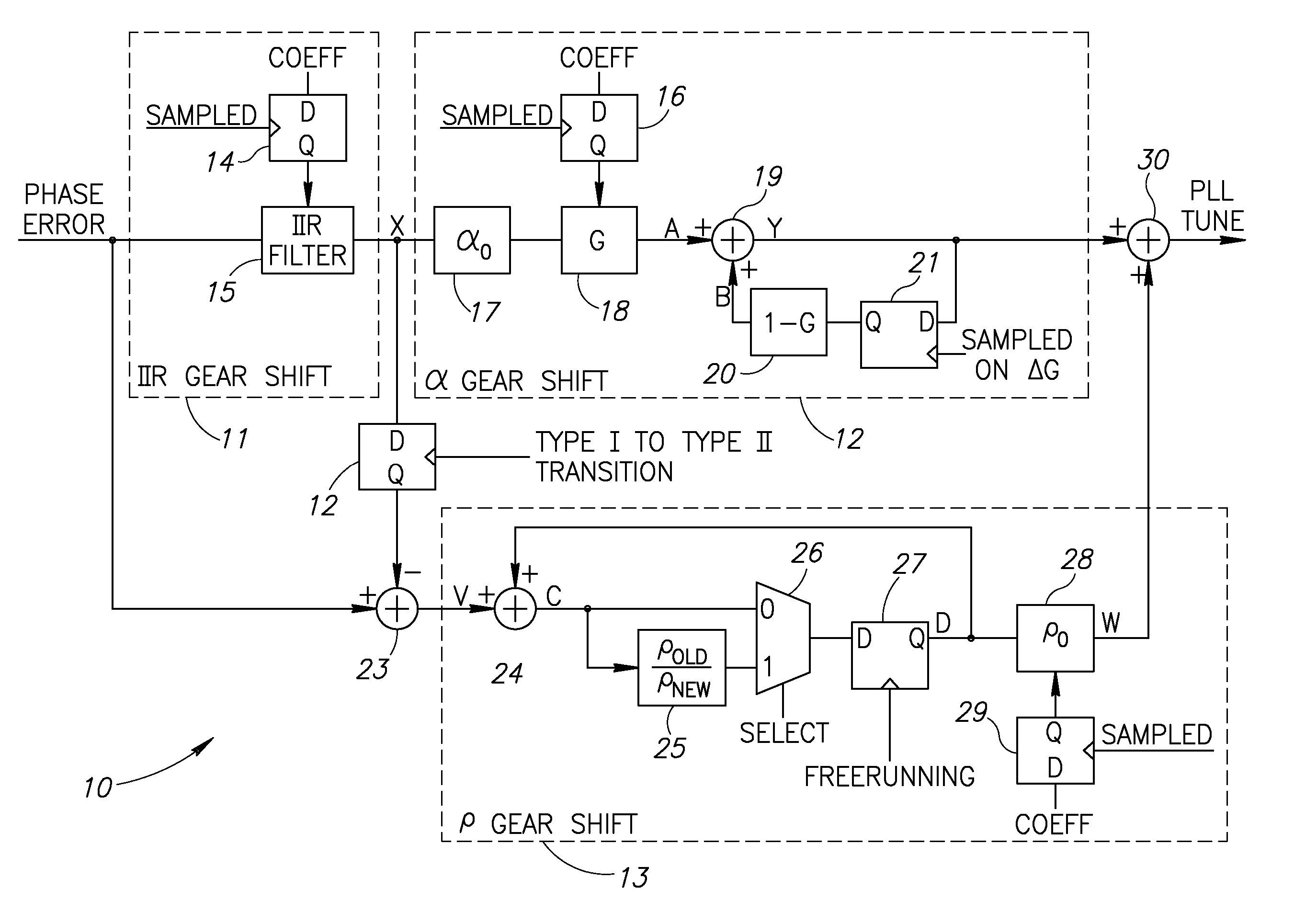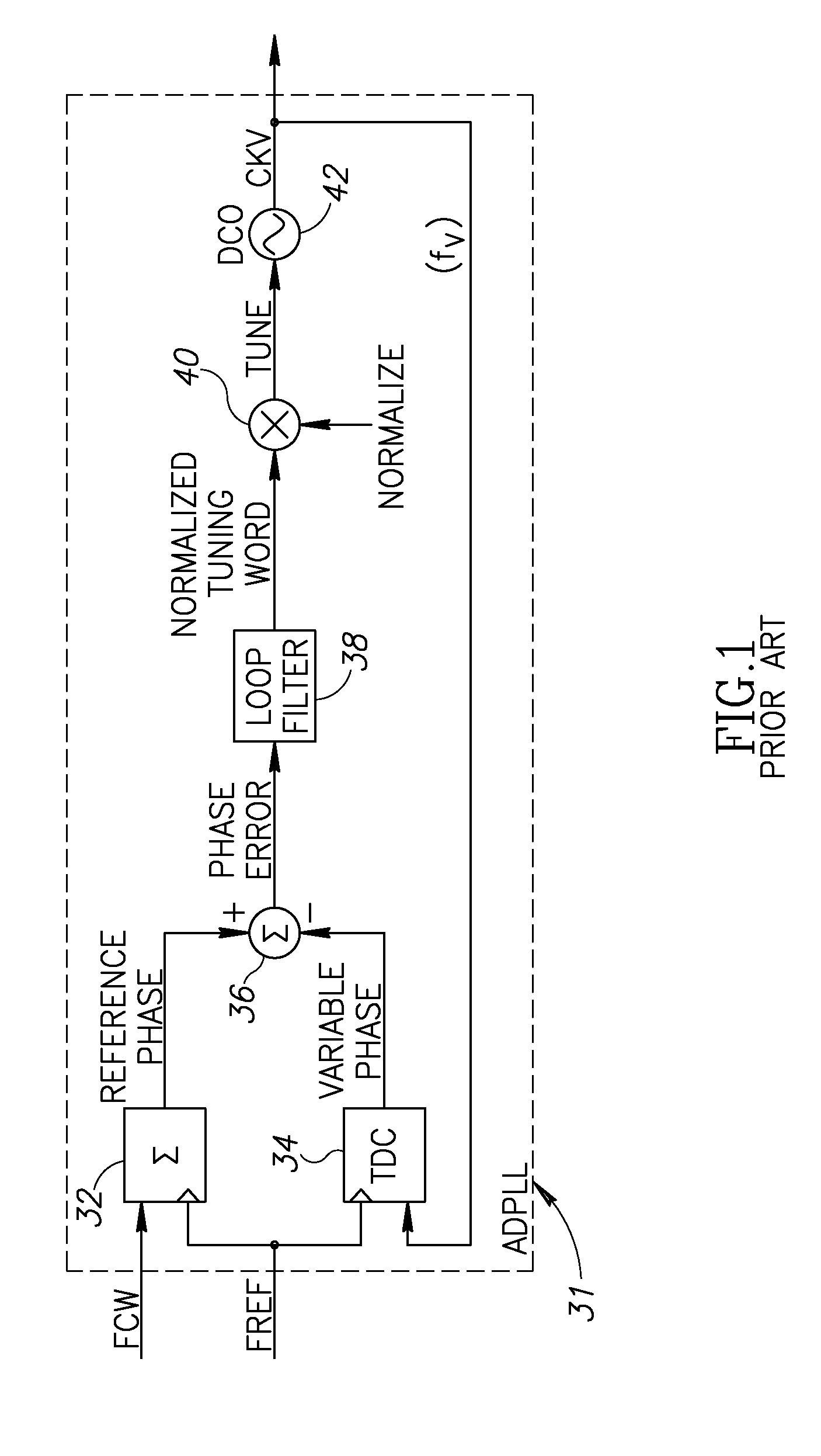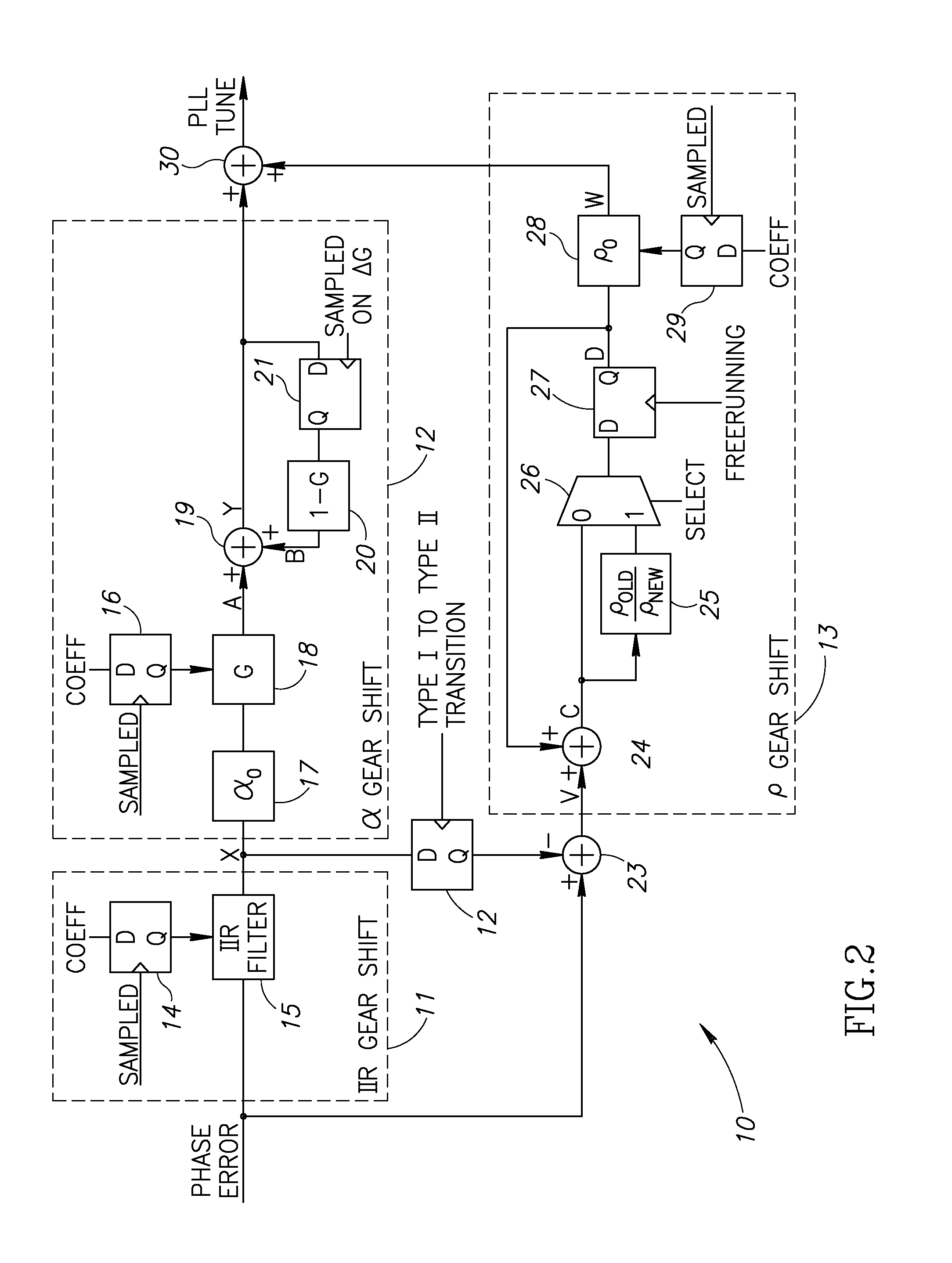Continuous reversible gear shifting mechanism
a gear shifting mechanism and reversible technology, applied in the field of communication, can solve the problems of limiting the pll settling time to typically no less than a hundred s, severe slowdown of the loop dynamics, and large current consumption, so as to narrow the loop bandwidth, widen the loop bandwidth, and increase the loop gain
- Summary
- Abstract
- Description
- Claims
- Application Information
AI Technical Summary
Benefits of technology
Problems solved by technology
Method used
Image
Examples
Embodiment Construction
Notation Used Throughout
[0030] The following notation is used throughout this document.
TermDefinitionASICApplication Specific Integrated CircuitCMOSComplementary Metal Oxide SemiconductorCPUCentral Processing UnitDCODigitally Controlled OscillatorADPLLAll Digital Phase Locked LoopDSPDigital Signal ProcessorFCWFrequency Command WordFPGAField Programmable Gate ArrayGSMGlobal System for Mobile CommunicationsHDLHardware Description LanguageIIRInfinite Impulse ResponseNTWNormalized Tuning WordPLLPhase Locked LoopPVTProcess, Voltage, TemperatureRFRadio FrequencyRMSRoot Mean SquaredTDCTime to Digital ConverterVCOVoltage Controlled OscillatorWCDMAWideband Code Division Multiple AccessZPRZero Phase Restart
Gear Shifting Mechanism
[0031] The present invention is a gear shifting mechanism that is operative to adjust the loop gain or bandwidth of a phase locked loop (PLL) circuit at any time the PLL is operational. The mechanism is adapted for use in the loop filter circuit of a PLL loop and ...
PUM
 Login to View More
Login to View More Abstract
Description
Claims
Application Information
 Login to View More
Login to View More - R&D
- Intellectual Property
- Life Sciences
- Materials
- Tech Scout
- Unparalleled Data Quality
- Higher Quality Content
- 60% Fewer Hallucinations
Browse by: Latest US Patents, China's latest patents, Technical Efficacy Thesaurus, Application Domain, Technology Topic, Popular Technical Reports.
© 2025 PatSnap. All rights reserved.Legal|Privacy policy|Modern Slavery Act Transparency Statement|Sitemap|About US| Contact US: help@patsnap.com



